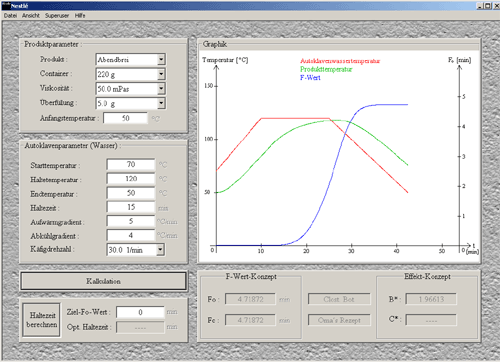Optimization of the industrial sterilization of food
In order to conservate food for a longer time, it is sterilized industrially using heat.
The goal is to destroy as many microorganisms (e.g. bacterias, spores) as necessary in order to obtain a
sufficiently sterile product. Unfortunately also nutriments like vitamins are destroyed during this process
as heat harms microorganisms as well as nutriments.
Thus the temperature should be controlled in such a way that a desired degree of sterilization is obtained
while destroying as few nutriments as possible. Additional optimization goals could be the reduction of energy
consumption during the process or to shorten the time needed for the sterilization.
In order to solve this problem, the research group Numerik of the University of Trier developed a
software in a joint research project with the Nestlé R&D Research Center. Beginning in
December 1996, the project was realized until November 1999 in collaboration with Astrid Battermann,
Marco Fahl, Patrick Justen, Friedemann Leibfritz, El-Sayed Mostafa and Michaela Schulze. The following
picture shows a screenshot of the final software version designed for the Microsoft Windows product family:
 Webmaster Webmaster |
 |
 |
 |
 |
|
FB 4 - Department of Mathematics |
|
University of Trier |
|
 |
 |
 |
 |
|
WAP-Homepage: http://www.mathematik.uni-trier.de/wap/ |
|





























